Accepted Scientific Name: Pediocactus despainii S.L.Welsh & Goodrich
Great Basin Naturalist 40: 83 (-86), fig. 1980

Pediocactus bradyi subs. despainii (Pediocactus despainii) Photo by: Valentino Vallicelli
SB1014 Near San Rafael Swell, Emory County, Utah, USA, TL Outdoors in the rock garden - cultivated all year round without any sheltering.
Origin and Habitat: Distribution: This species is known in the wild from only two localities with a total of about 6000 individuals, it is endemic to Emory county in central Utah (extent of occurrence is 400 km2).
Altitude: 1450 to 2080 meters above sea level.
Habitat: It grows on clayey hilltops, benches, gentle slopes and desert pavements of cobble or pebble, in open pinyon-juniper woodlands and mixed semi-arid shrub-grassland communities in fine textured soils rich in calcium. The habitat of this species is vulnerable. In fact it is seriously threatened by illegal collection, surface disturbance from off-road vehicle use, humans trampling and cattle grazing. In addition part of the range of this species is exposed to dangers from exploitation of oil, gas, gypsum and other minerals. Snow usually covers the plants during the coldest winter month.
Synonyms:
Common Names include:
ENGLISH: San Rafael Cactus, Despain's Pincushion Cactus, Despain Footcactus, San Rafael Well Cactus, Despain's Cactus
Description: (Identifying Characteristics): It is a small cactus, typically unbranched, but during dry or cold weather the plants may not appear above ground at all. (in cultivation branching is quite common).
Stem: Subglobose to obovoid to turbinate, 3.8-6 × 3-9.5 cm; Can swell to up to 3.8-6 cm in diameter and 3-9.5 cm in height
Roots: Succulent and Fasciculate.
Areoles: Circular to oval, white to brown, villous to glabrate.
Spines: Smooth, relatively hard, radial, 9-15 per areole, spreading, white, 2-6 mm. (rarely in old plants, a small central spine of 4-8 mm).
Flower: Near the tip of the stem, 1.5-2.5 × 1.8-2.5 cm; scales and outer tepals minutely toothed to entire and undulate; outer tepals yellow-bronze to peach-bronze or pink with purple midstripes, 4-10 × 3-6 mm; inner tepals yellow-bronze to peach-bronze (rarely pink), 6-12 × 4-6 mm. Blossoming time: April and May.
Fruit: Green, drying reddish brown, turbinate.
Notes: This plant is a spring ephemeral but can have - with a good environmental condition - a second short growing season in Autumn before the long winter rest . In the wild the species is easily overlooked except in the spring, when they are in bloom.
Bibliography: Major references and further lectures
1) Marshall Cavendish Corporation "Endangered Wildlife and Plants of the World" Volume 2 Marshall Cavendish, 2001
2) Edward Anderson “The Cactus family” Timber Press, Incorporated, 2001
3) ames Cullen, Sabina G. Knees, H. Suzanne Cubey "The European Garden Flora Flowering Plants: A Manual for the Identification of Plants Cultivated in Europe, Both Out-of-Doors and Under Glass" Cambridge University Press, 11/Aug/2011
4) David R Hunt; Nigel P Taylor; Graham Charles; International Cactaceae Systematics Group. "The New Cactus Lexicon" dh books, 2006
5) Butterworth, C. & Porter, J.M. 2013. Pediocactus despainii. In: IUCN 2013. "IUCN Red List of Threatened Species." Version 2013.2. <www.iucnredlist.org>. Downloaded on 02 January 2014.
 Pediocactus bradyi subs. despainii (Pediocactus despainii) Photo by: Valentino Vallicelli
Pediocactus bradyi subs. despainii (Pediocactus despainii) Photo by: Valentino Vallicelli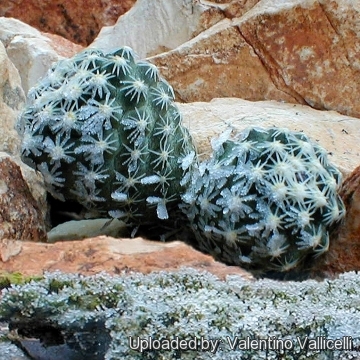 Pediocactus bradyi subs. despainii (Pediocactus despainii) Photo by: Valentino Vallicelli
Pediocactus bradyi subs. despainii (Pediocactus despainii) Photo by: Valentino Vallicelli Pediocactus bradyi subs. despainii (Pediocactus despainii) Photo by: Valentino Vallicelli
Pediocactus bradyi subs. despainii (Pediocactus despainii) Photo by: Valentino Vallicelli Pediocactus bradyi subs. despainii (Pediocactus despainii) Photo by: Valentino Vallicelli
Pediocactus bradyi subs. despainii (Pediocactus despainii) Photo by: Valentino Vallicelli (white areoles form) (Pediocactus despainii) Photo by: Prof. Ilham Alakbarov
(white areoles form) (Pediocactus despainii) Photo by: Prof. Ilham Alakbarov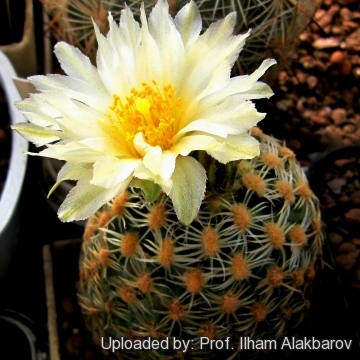 (brown areole form) (Pediocactus despainii) Photo by: Prof. Ilham Alakbarov
(brown areole form) (Pediocactus despainii) Photo by: Prof. Ilham Alakbarov Pediocactus bradyi subs. despainii (Pediocactus despainii) Photo by: Valentino Vallicelli
Pediocactus bradyi subs. despainii (Pediocactus despainii) Photo by: Valentino Vallicelli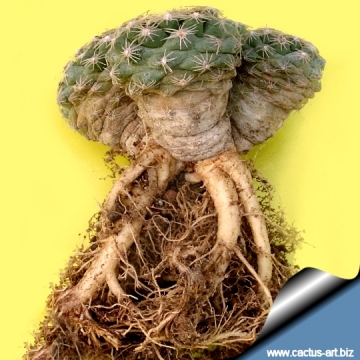 Pediocactus bradyi subs. despainii (Pediocactus despainii) Photo by: Cactus Art
Pediocactus bradyi subs. despainii (Pediocactus despainii) Photo by: Cactus ArtCultivation and Propagation: Rot prone and difficult to grow on it's own roots in cultivation
Watering Needs: better and easier if grafted. It needs regular water in late winter, early spring (the short main growing season), and also in Autumn, when flower buds are produced and it starts growing again. The flowers buds stay dormant on the plant apex all winter. They will then open in spring when the temperature rises. To avoid any damage to the buds, don’t let grafted plants that stay in the heated greenhouse completely dry out. Some light watering in winter is useful for keeping the flower hydrated and healthy.
Frost Tolerance: Winter hardy (to -25°) the plants grafted on Opuntia are good for outdoor cultivation in raised beds, rock gardens, balconies, window sills etc..
Your Photos
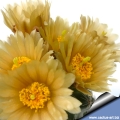
by Cactus Art

by Cactus Art
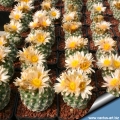
by Cactus Art

by Cactus Art

by Cactus Art























